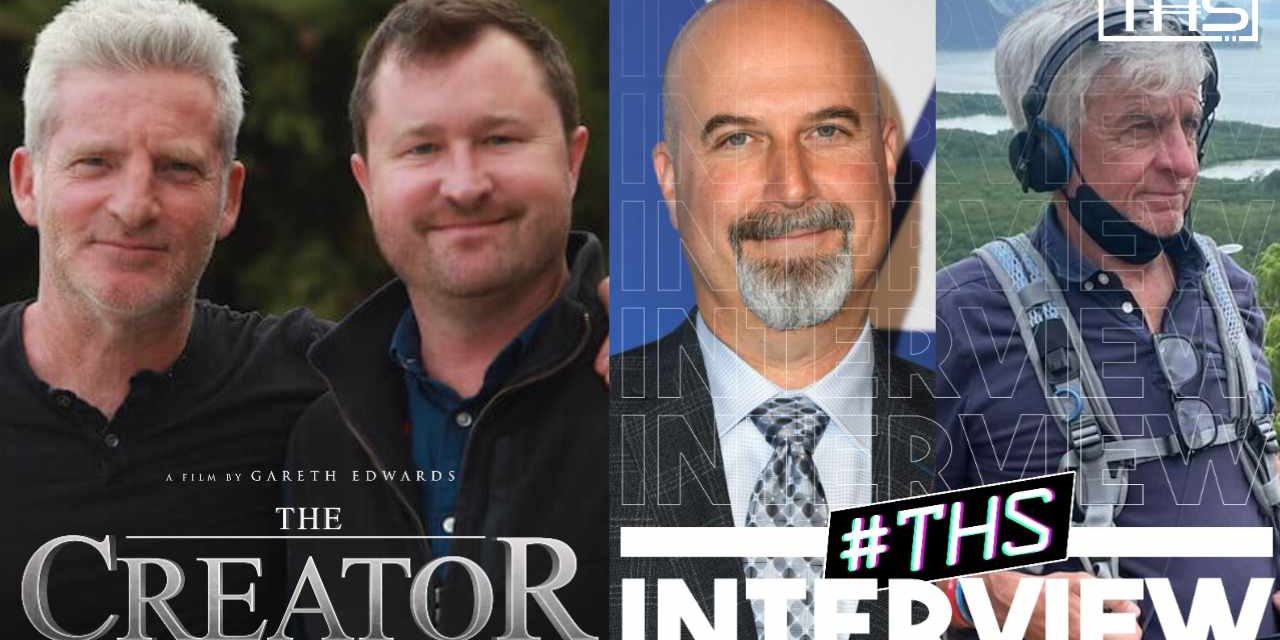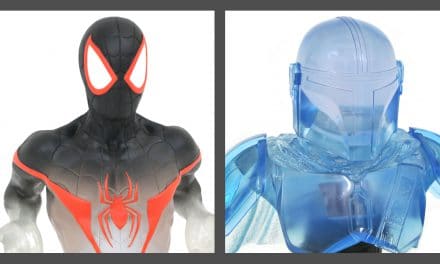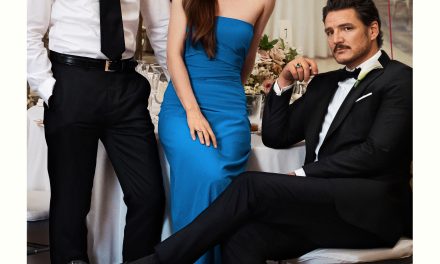Even when compared to the other big-budget sci-fi films that populate the box office, The Creator is something unique. Director Gareth Edwards’ exploration of spirituality and imperialism through the lens of a robotic conflict has a lot on its mind. That commitment to finding the humanity in the robotic was rooted into all levels of the production, especially with the Academy Award-nominated Sound Team.
During an interview with That Hashtag Show ahead of the 96th Academy Awards, the Oscar-nominated Sound Team behind The Creator — Supervising Sound Editor/Sound Designers Erik Aadahl and Ethan Van der Ryn, Re-Recording Mixer Tom Ozanich, and Production Sound Mixer Ian Voigt — discussed the elements that made filming the sci-fi epic unique from any other production, throwing out the rule book, and how the emotional core of the film was present from the very beginning.
The Creator Sound team on Gareth Edwards’ Sci-Fi Epic
“Our challenge was to combine that natural realism with high concept sci-fi.” — Erik Aadahl, Supervising Sound Editor/Sound Designer

What was each of your approaches to fusing The Creator‘s sci-fi aesthetic with the naturalism of the film?
Erik Aadahl: Gareth’s vision for The Creator is so unique. It’s unlike any project I’ve ever worked on. I think his whole concept was to combine the natural world, this lived-in realism with high-concept science. It’s almost like combining Terrence Malick with James Cameron. The first time it really dawned on me what Gareth was going for was when before he even started shooting. He showed us some concept art. There’s this image of a temple and it looked like it was in a jungle of Cambodia, kind of like an Angkor Wat kind of location.
There was monk praying in the image. But it wasn’t a human. It was a robot. That breaks up so many thoughts to like, well, can can robots or AI be spiritual? It’s such a fascinating mix. So, for us as the sound team, our challenge was to combine that natural realism with high-concept sci-fi. Just in the sci-fi, there’s this whole range from retro science fiction, like the Sony Walkman versions of robots, to the more high-tech stuff and everything in between. Broadly, that was kind of our challenge when we when we started to tackle the sound of The Creator.
Ethan Van der Ryn: I think Erik kind of expressed really the goal of our work. One of the main goals was to figure out how do we fuse the technology with the world. When we work with big effects films, we really endeavor to ground everything in reality, to make it real and believable, you know? That’s so important with this film especially, because it takes us to an alternate world somewhere in the future. Because it was all shot in all these real locations with a lot of real people, visually that fusion is happening. Sonically, we wanted to do something similar.
We took a lot of recordings that were done in all of these different locations, and many of them were done on on-set, and we took those recordings and brought them back into the studio. We then combined them with sounds of the future. As Eric was describing, the retro tech idea involved helped ground it. For instance, when the choppers flew overhead, the sort of have the “flop flop flop” pattern that we’re familiar with from Vietnam War era, which this film was referencing. [It was all about] fusing those into future technology sounds.

Tom Ozanich: I think when we’re getting to the mix side of it, my mixing partner Dean and I are always kind of like evaluating how to attach the things that we see — real or made up science fiction things — to the screen and to the things that we’re seeing on the screen. That’s something where you’re just kind of always questioning that and evaluating that and trying to figure out, ‘If I do this, or if I shape the way, maybe there’s a little bit too much low end to this thing.’ It’s kind of giving it away as reading false or something. We need to shape it a little differently, or we need to put it in this space with reverb and where we pan it and all that stuff. These guys go and create these sounds and then we have to guess [how to combine them]. That’s the fun part of the job.
Ian Voigt: From the first time Gareth and I spoke, I realized this was going to be completely different filmmaking experience than I’ve ever had with any film that I’ve ever done. He wanted to do all very lightweight, very fast moving adaptive cruise. He wanted to be able to shoot 360 degrees wherever you chose. Our problems from the on the off-set was the lightweight equipment. He was shooting it all on… prosumer cameras, you know, we’ve never heard of it. After a while, we managed to get a sync process going. All our filmmaking protocols went out the window, and he was pretty blatant about it. He just couldn’t be asked for it, basically. I mean, when we eventually convinced him to maybe have a few boards, he would just pass the camera over to the grip and pointed him wherever the board is.
The basic premise of the whole thing was, it was going to be shot with real actors in real locations. Everybody was on board with the fact that we would do 25-30 minute takes, and we’d reset. So the whole ethos of filmmaking was out the window. That’s what made it the most amazing project. I think what [the team has] done, basically we were trying to capture a love story. What we did was shoot basically a film, and then the VFX team created the sci-fi aspect of the whole thing. I was absolutely blown away. The first time I saw the film, I was absolutely amazed by the amount of work that went into it and the effort of everyone involved. In fact, everybody on the whole film bought into Gareth’s vision.
“From the first time Gareth and I spoke, I realized this was going to be completely different filmmaking experience than I’ve ever had with any film that I’ve ever done.” — Ian Voigt, Production Sound Mixer

Especially considering the unique filming conditions of The Creator, what would you say surprised you the most about this production?
Erik: I’m sure we all we all have a million anecdotes for this film. Maybe the thing that first opened my eyes was the sequence that Gareth sent us of the floating village being attacked by a tank, and it was this 15-minute sequence. There was no music, no temp music put into it, which is very rare. I did a pass on on it. There were no visual effects either. So we’d have a font saying “Tank.” We were essentially designing the sounds blindly. Which is tricky, but also very freeing. We’re not grounded, we’re not tied to the picture. We can actually come up with these ideas and just see what excites us sonically. That was Gareth’s direction also. He wanted something unique. He never said ‘This should sound like something from that movie or something from this movie.’
Gareth gave us much more abstract directions. ‘For Nomad, the beams should sound like they could give you cancer if you put your hand in the beam.’ for to get started. Our job was to be like well, what is the sound of cancer? We found this radioactivity and volatility to it. Back to the tank sequence, we got our pass on it and we thought that without music, this is really kind of visceral. It’s very real. I mean, it just feels like you’re there. Cinema-like experience. We thought we would have to put this big pitch together to Gareth, please consider not putting music in the sequence because it’s so evocative without it. And Gareth was like, ‘Oh, no, I never intended to put music in the sequence. That was always the intent.’

Erik: That’s what I love about Garrett. Whenever there’s the tried and true way of doing something, something that’s been done before but you know works, he says “Ignore that. Take the risky path. Do something different to surprise ourselves, and only then can we give the audience something special. Something that’s new, something that’s unique. That sequence was so fun, because just design wise, there were so many strange, happy accidents. The sound of the tank was a complete accident. I was driving one weekend and my car veered median, so that it makes a sound to wake up a dozing driver, and the whole car reverberated.
You look for those sort of serendipitous moments. That’s part of the art of sound design. It’s to pick something that’s totally different and apply it to picture. But there can be this really fascinating alchemy. Alfie’s powers, we didn’t base on sort of synthetic sounds. When she touches the bomb robot on its head, that’s the sound of an Aboriginal didgeridoo instrument, which felt so interesting. She’s almost a spiritual being. It felt wrong to put in a synthetic sound there. So I love when we can do these sorts of non sequiturs and juxtapose different things that kind of blur the lines between reality and unreality.
Ethan: The first thing that really surprised me was when we took a scouting trip to Southeast Asia for three months. We were shooting footage, to really create this proof of concept piece to get the funding to make the movie. [Gareth] had a short cut of it put together and he sent it to us. He also all sent it to ILM to start applying some of the VFX that that he intended to use in the film. There was a shot in the piece of of somewhere in Southeast Asia, this old man, this villager just sitting on a ball and smoking a cigarette. ILM had applied the VFX of the side of the head with the hole in it, and the gears spinning. Just seeing that one shot, it was instantly like, “Oh, I get it.” This is kind of mind blowing. This is going to be something special. That one image was enough to make you understand and feel the concept, what he was going for with the fusion of these of these two disparate kind of visions and worlds. The fusing of the future with the sort of gritty realism of real people in all different environments throughout Southeast Asia. After working on that little piece, we were 100% all in and it was powerful.
Tom: The biggest difference in making The Creator versus a lot of other sci-fi stuff is how the robots and the technology, the high level robots like Alfie are so human. They are so real, that the human characters in the movie begin to forget that they’re actually not human. We as an audience to do as well. The thread and the whole relationship of Joshua and Alfie is such a human experience and relationship. When we started this, there were no visual effects in there. We were doing this first mix of it and there’s just words saying tanker robot or whatever. But what was still true then and maintained all the way through was that this connection, this relationship, was so heartfelt and so strong. It was a very emotional and moving film. You felt for Alfie. You felt for their relationship. That was really powerful. It was so great because — the film has these amazing awesome visual effects and all this great stuff. But the story didn’t need to have great visual effects. The story was already was working.

Tom: Once we add in the great sound design and the great visual effects and everything and built it all up, then you had, what we’re talking about this coagulation of everything becoming this real and visceral and tangible place to live in. I love that we were able to do some things. Gareth and [the rest of the team] were totally down with doing some things that are just odd. The sound sometimes just goes in a totally different direction than you would expect, or doesn’t play what you’re expecting or plays something totally different or nothing at all. That’s just so refreshing. We’re sort of over-saturated with the same old stuff that you know, or we’re bored with it. [The Creator] kind of keeps waking you up. It keeps doing things that you go. ‘Wow, that was that was cool. What is going on here?’
Ian: I think you’re absolutely right on. I think it was a great story from the get-go and the collaboration between all the artists only enhanced it. The storytelling and the visual effects enhanced the storytelling that was there from the beginning. The actors were, without doubt, just absolutely incredible. Everyone just gave fantastic performances. And that’s what we were just trying to capture I mean, at seven years old, I think [Madeleine Yuna Voyles] was only 7 when she made the film. I mean, she was so shy. Yet, she could turn it on, just like that. It was a very close knit unit that we all went through and we went through everything together. I think that is portrayed in the film. It was a great story without anything extra, and then we came in and enhanced it.
The Creator is now streaming on Disney+.
For more on Movie News, make sure to check back to That Hashtag Show.






![Obi-Wan Kenobi: A Jedi’s Return Is Coming To Disney+ [Trailer]](https://www.thathashtagshow.com/wp-content/uploads/2022/08/OBW-cover-440x264.jpg)